Browse Primary Sources
Locate primary sources, including images, objects, media, and texts. Annotations by scholars contextualize sources.
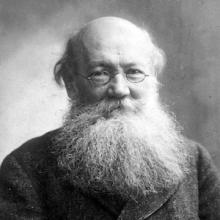
Peter Kropotkin on the Need for Individual Action
The Russian author Peter Kropotkin (1842–1921) wrote prolifically about the French Revolution and about the ideology known as anarchism. He joined in the Russian revolutionary movement in 1872, was imprisoned by the tsarist state, and fled, escaping to Paris and then Switzerland, where he founded and edited a revolutionary newspaper.

Leon Trotsky, The Permanent Revolution
Leon Trotsky (1879–1940), whose original name was Lev Davidovich Bronstein, was one of the chief figures in the Russian Revolution of 1917. After years spent in exile agitating in favor of Russian communism, he put his ideas into practice as one of the leaders of the Bolshevik Revolution.

Antonio Gramsci: Selections from The Prison Notebooks
Antonio Gramsci (1891–1937) was an Italian intellectual who joined first the Socialist and then the Communist Party. Between 1924 and 1926 Gramsci was the head of the Italian Communist Party. In 1926 he was arrested by the Mussolini fascist government and sent to prison where he remained until 1937.
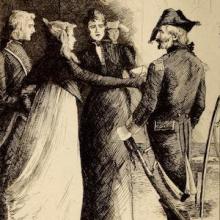
Balzac’s The Chouans
Novelist Honoré de Balzac (1799–1850) was a giant of nineteenth–century European literature. In his multivolume The Human Comedy, he investigated the general desire for social advancement in the post–revolutionary world.

Dickens, Tale of Two Cities
Charles Dickens’s (1812–70) novels generally appeared in serial form in popular newspapers.
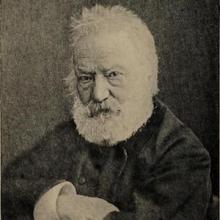
Hugo, Ninety–Three
Victor Hugo (1802–85) was an ardent republican and defender of the revolutionary legacy who went into exile during the Second Empire (1852–70). He lived long enough to become an icon of the Third Republic. He portrayed the democratic aspects of the Revolution in glowing, indeed somewhat romanticized terms.

Image of the King at the Festival of Federation
Having lived through a tumultuous year, France’s political leaders, new and old, perceived the need to foster a sense of unity among the people. The King’s more liberal ministers in particular hoped to prevent attempts to roll back the changes made since the spring of 1789 and to limit momentum for farther–reaching challenges to the monarchy.
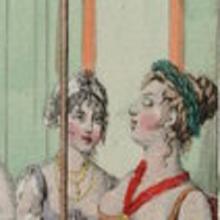
Watch Yourself or You'll be a Product for Sale
The women in this image appear to be tempted to a life of prostitution. The female figure in the left foreground gestures toward the door but remains modestly attired. Once inside, the women are there for the pleasure of men and wear revealing or little clothing. The contrast in this moralistic image also reveals how differently contemporaries could depict "real" women from allegorical ones.
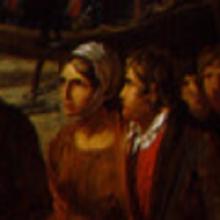
The Fatherland in Danger
This painting of the period by Gillaume Guillon Lethière shows the emotion caused by the prospect of loved ones departing for the army. Women had to part with their families in order to support the nation in its time of need. Notice the female statue overlooking the scene.
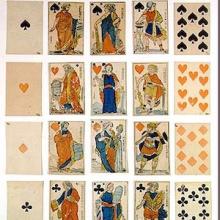
Game of the Great Men, Minot the Elder
Revolutionaries redesigned playing cards in order to eliminate references to royalty (kings, queens, jacks) and replace them with great men and abstract virtues.

Scenes from Andrzej Wajda’s film, Man of Iron (1981)
Filmed just after Solidarity’s initial spectacular rise in 1980, Andrzej Wajda’s Man of Iron was won immediate global acclaim.
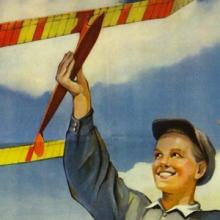
Traditional Soviet Values for Children
Soviet propaganda posters presented positive images of healthy, active people engaged in useful service to the state, including children. This Soviet poster from 1953 was typical of this image.
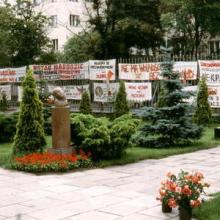
Photographs of the St. Stanisław Kostka Church in Warsaw
Father Jerzy Popiełuszko was one of the most vocal priests involved in the Solidarity movement in the early 1980s. Even after the declaration of martial law in 1981, Father Popiełuszko remained an outspoken opponent of the Communist regime, and his church in the Warsaw suburb of Żoliborz became a gathering point for those who wanted to hear anticommunist sermons.
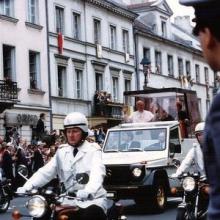
Photographs from the Papal Visit of 1987
From June 8-14, 1987, Pope John Paul II made his third "pilgrimage" to his homeland (he had already visited in 1979 and 1983). As on the first two occasions, life in Poland seemed to stop during his visit, as nearly the entire country (at least, so it seemed) participated in this historic moment.
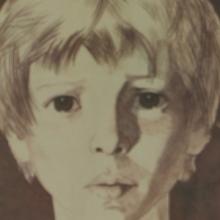
Divorce in the Soviet Union
One of Mikhail Gorbachev's most famous reform movements was 'glasnost' (openness), which allowed partial freedom of the press to address social problems and corruption within the Soviet Union. Among the issues raised during the 'glasnost' era of the Soviet Union were social problems, including previously forbidden subjects such as the high rate of divorce.
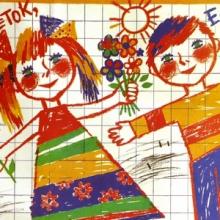
Environmental Activism in the Soviet Union
On April 26, 1986, an explosion at the Chernobyl Nuclear Power Plant in Ukraine led to the radioactive contamination of the surrounding countryside and to radioactive fallout throughout Eastern and Western Europe.
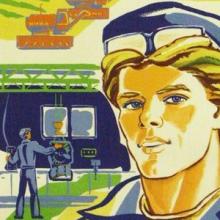
Perestroika and the changing Soviet workforce
One of Mikhail Gorbachev's most famous reform movements was perestroika (reconstruction), an attempt to rebuild the Soviet economy, which had been stagnating for more than a decade. A large part of perestroika emphasized developing individual responsibility among the Soviet workforce, in order to inspire greater productivity.

Traditional Image of Soviet Women
Soviet propaganda posters presented positive images of healthy, active people engaged in useful service to the state, including women. In this poster from 1974, three women, with their hair covered with a traditional kerchief, are depicted alongside a clear slogan: "Soviet Women!
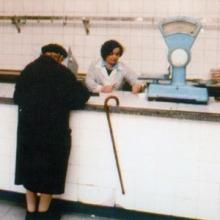
The Butcher Shop, Warsaw
In the 1980s average citizens of East European countries faced many challenges, including daily difficulties created from ongoing and severe shortages of consumer goods. Buying such necessities as food, clothing, and hygiene products was a recurring obstacle to average consumers.

Shopping queue in Wrocław
Upheavals in political, economic, social, and cultural conditions in the 1980s led to many challenges in everyday lives of average citizens of East European countries. Buying such necessities as food, clothing, and hygiene products posed serious difficulties to consumers. Store shelves were frequently empty and lines that took as long as several hours to navigate were common.